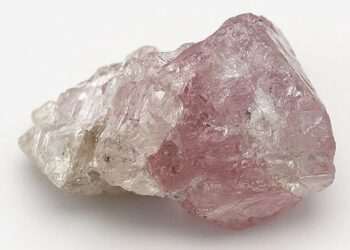The interstellar object traveling through our solar system has just made its most startling move yet, appearing to reverse thrust as it disappeared behind our sun.
It’s the latest in a growing list of puzzling clues that some scientists have claimed prove that the object dubbed 3I/ATLAS is not just an ordinary comet from a distant solar system.
Harvard physicist Avi Loeb has been among the leading voices maintaining that there is enough evidence to say 3I/ATLAS has shown signs of being guided by an unknown intelligence.
The next clue could emerge soon, as researchers rush to figure out what happened when the object reached its closest point to the sun on October 29.
Loeb told the Daily Mail that if 3I/ATLAS comes out of this blind spot in a completely different place than gravity was taking it, or does not break up like a normal comet, it would be a sign the object was artificial and likely powered by some kind of engine.
Initial scans have found that 3I/ATLAS brightened at a rate about seven times faster than typical comets reaching the sun.
Even more puzzling, the comet now appears distinctly bluer, a reversal from its previously reddish hue.
Most astronomers have been reluctant to consider the possibility of an extraterrestrial origin, noting that the space rock has shown the classic signs of being a comet, including having a tail and a coma, a large cloud of gas and dust surrounding it.

3I/ATLAS (pictured) exhibits unique features, including an anti-tail, extreme color changes, an extremely unusual course, and a massive coma

In August, the Two-Meter Twin Telescope in the Canary Islands captured an image showing a faint jet extending roughly 3.7 miles from the object’s nucleus, pointing toward the sun
Previous studies throughout the summer have concluded that 3I/ATLAS’s strange chemical makeup, rich in carbon dioxide gas, is merely a result of forming in a solar system completely foreign to our own.
However, Loeb contends that those in the scientific community who have dismissed the more extraordinary possibilities are more concerned with being right and avoiding criticism than alerting the public to a potentially world-changing event.
‘Here we are talking about a potential for something that could affect humanity in the future in a dramatic way, and so you shouldn’t apply the same approach of being as conservative as possible,’ Loeb explained.
‘I don’t want to be their therapist, but they’re trying to obviously protect their reputation, not take risks, and also pretend that they know the answer in advance,’ he added.
Daily Mail reached out to several scientists who have been studying the alleged comet, but did not receive a response to our request to comment on the latest findings.
A study in August detected an unusual nickel plume from the object. Unlike natural comets, which always emit nickel alongside iron, 3I/ATLAS showed the metallic element without any detectable iron.
The new study, published by astrophysicists in Chile, found that 3I/ATLAS is shedding nickel at roughly five grams per second and cyanide at 20 grams per second, with both rising sharply as the object moves closer to the sun.
Researchers noted that the mechanisms driving these emissions are not typical of natural cometary processes.

Color-enhanced images shared by multiple social media users revealed a strange green glow around 3I/ATLAS

Harvard Professor Avi Loeb (pictured) has maintained that there are too many unusual clues that suggest 3I/ATLAS is not a natural comet to ignore
Scans of 3I/ATLAS, released the same month, suggested it is likely an unusual comet that’s much smaller than it previously appeared and is unexpectedly releasing loads of carbon dioxide gas (CO2).
The large amount of CO2 pouring out, about 940 trillion molecules per second, was a major finding, suggesting 3I/ATLAS formed in a star system that doesn’t look anything like ours, where comets are much different than the ones we see orbiting our sun.
Based on all the light coming from 3I/ATLAS, scientists originally suspected the object was more than 12 miles in diameter/ However, NASA’s most powerful telescopes have cut that estimate down to 1.7 miles.
The comet seemed larger because over 99 percent of the light observed came from a large, bright cloud of dust and gas surrounding it, called a coma. 3I/ATLAS is currently about 298 million miles from Earth.
Not only is the interstellar object much smaller, but a new study by NASA’s SPHEREx telescope discovered that 3I/ATLAS is releasing a large amount of CO2 and is covered in water ice.
This month, NASA’s Perseverance rover on the Martian surface sent back photos of the object, showing what appears to be a massive cylindrical shape.
Stargazers on social media shared color-enhanced images of the object, dubbed 3I/ATLAS, which showed the interstellar visitor having a green glow as it passed Mars and heads closer to the sun.
Loeb analyzed the Perseverance rover’s photos by calculating its distance, speed, and camera settings.
According to his initial study, Loeb was not convinced that 3I/ATLAS is actually a massive cylindrical object, noting that the strange shape might have been a trick of the rover’s camera stretching out its shape.

NASA’s James Webb Telescope spotted the interstellar visitor in August and the June spacecraft is scheduled to observe it in 2026
He explained that the apparent cylinder from the rover’s ‘Navcam’ was likely caused by the camera stacking hundreds of images of 3I/ATLAS over a period of about 10 minutes, making it look more like a log than a ball.
The professor added that 3I/ATLAS is likely smaller and rounder, but still massive, with a potential diameter of more than 28 miles across.
More than five studies, with dozens of researchers involved, have concluded that the object is just a unique, natural comet, which many other scientists have been echoing for months.
Jonathan McDowell, an astronomer and astrophysicist working at the Harvard–Smithsonian Center for Astrophysics, previously claimed: ‘It is clearly a natural comet; suggestions to the contrary are laughed at by people who are actual comet experts.’
UCLA research David Jewitt recently agreed with the comet theory, publishing a paper that explained the object’s shifting tail as it moved behind the sun as normal cometary behavior.
An international team of researchers also concluded that the increasing dust activity around 3I/ATLAS, its changing color, and apparent lack of a tail were due to our perspective from Earth at the time of the scans, not the comet acting strangely.
First spotted on July 1, 3I/ATLAS is just the third recorded object to travel through our solar system from another point in the Milky Way galaxy.
The other two, Oumuamua in 2017 and the comet Borisov in 2019, were nowhere near the size and mass of 3I/ATLAS, which Loeb has calculated to be at least 3.1 miles long and 33 billion tons.
Loeb explained that the object’s size is yet another clue that it may not be a comet, as there isn’t enough rocky material in interstellar space to have created such a structure naturally.
‘It’s bigger than the asteroid that killed a dinosaur 66 million years ago, and such objects are extremely rare. It would have been on the order of 10 million times more massive than Oumuamua and 10,000 times more massive than Borisov,’ Loeb revealed.
However, the scientist said his first clue that something wasn’t adding up with 3I/ATLAS was the sheer brightness of the object while it was still far away from our planet and the sun.
The supposed comet’s backward ‘anti-tail,’ its strange course taking it close to three planets, and its unique chemical combination of nickel and carbon dioxide have all contributed to a growing belief that 3I/ATLAS is not a floating space rock.
Loeb noted that one oddity would be explainable, but he calculated that there were no fewer than eight anomalies with this space rock.
The scientist calculated that the odds of these strange occurrences happening at the same time were one in 10,000,000,000,000,000 (that’s 10quadrillion).
Despite not being projected to collide with the planet, NASA took the extraordinary step of adding 3I/ATLAS to the list of threats tracked by a United Nations-endorsed group focused on planetary defense against near-Earth objects.
The decision has helped to mobilize all of the world’s telescopes to observe the interstellar visitor, with 227 observatories already tracking it.
Loeb noted that 3I/ATLAS will make its closest approach to Earth on December 19 and NASA is planning to take even more detailed readings of the object as it approaches the Juno spacecraft near Jupiter on March 16, 2026.
‘We should not miss an opportunity, because this is a gift from interstellar space,’ the Harvard professor explained.
Loeb concluded by saying the arrival of 3I/ATLAS and the recent visit of Oumuamua just eight years ago cannot be dismissed as random events in the cosmos.
‘What nature is trying to tell us is that we don’t understand something.’






